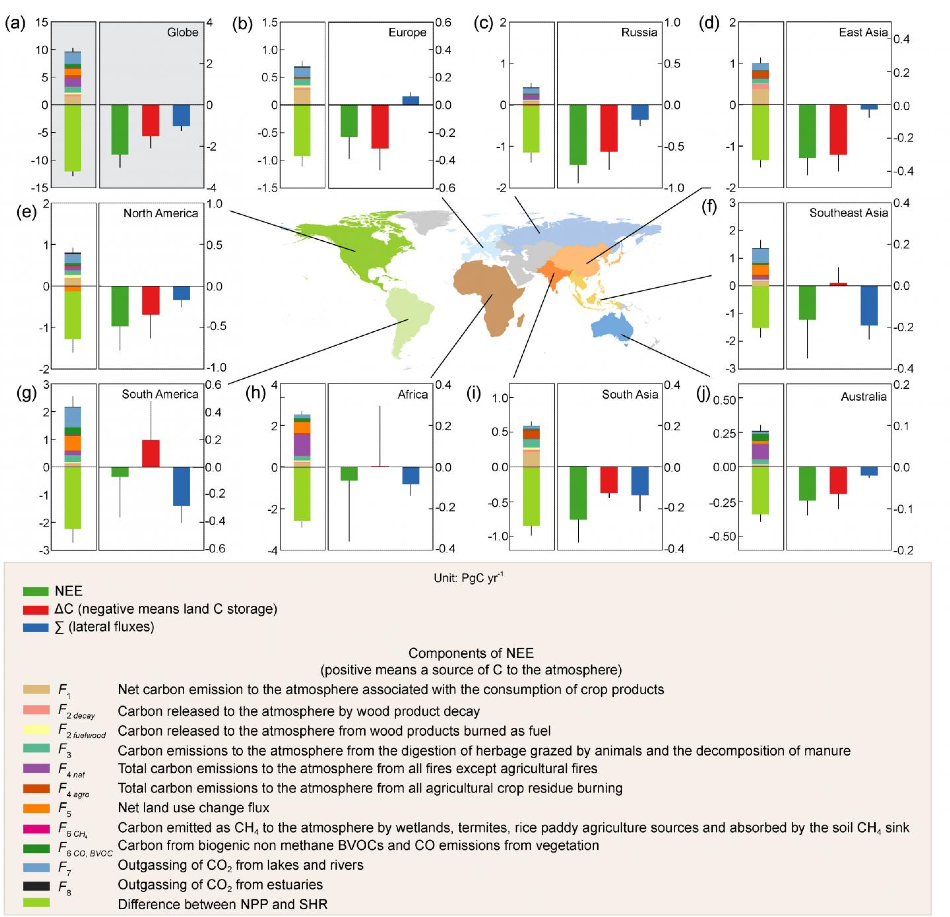Jul 27 2020
Regional carbon budgets should be highly accurate to notify land-based mitigation policy and to track the progress in the mitigation path.

Image Credit: ©Science China Press.
For all the nine regions constituting the entire world, inventory estimates of changes in carbon stock were gathered and complemented using satellite estimates of variations in biomass where inventory data were unavailable.
Then, the net land-atmospheric carbon exchange was evaluated by taking the total of the carbon stock variations quantified by inventories and lateral carbon fluxes from riverine carbon export to the ocean and from crop and wood trade.
Estimates from all the regions were summed up to obtain the first-ever global “bottom-up” terrestrial carbon budget of anthropogenic CO2 uptake. The result was a net sink of −2.2 ± 0.6 Pg C y−1 (where 1 Pg C = one billion tons of carbon) from 2000 to 2009, consistent with the autonomous top-down budget deduced from earlier IPCC assessment reports obtained through observations of the fossil fuel emissions and CO2 growth rate.
This new estimate is a crucial breakthrough for global carbon cycle studies.
The researchers of this study broke down the net land-atmosphere carbon flux of each region into incoming and outgoing fluxes and demonstrated that a major portion of the carbon fixed in terrestrial ecosystems through plant productivity is shifted away from harvest and export to rivers or lost by fires and by emissions of decreased biogenic carbon species such as methane and biogenic volatile compounds.
Carbon that reaches the soil as litter and is available as a substrate for microbial decomposition forms only a minuscule fraction of productivity that was earlier calculated by carbon models that disregard lateral export processes.
The result is that global soil heterotrophic respiration—or the amount of CO2 discharged every year from soil microbial processes—is only 39 Pg C yr−1 in comparison with Net Primary Productivity inputs of 50 Pg C yr−1.
In this study, Ciais and co-workers analyzed the consequences of a small-scale heterotrophic respiration for the residence time of carbon and future predictions for the carbon cycle and temperature. The researchers found a positive feedback of 15 parts per million in the future CO2 concentration, or an additional warming of 0.1 °C.
Journal Reference:
Ciais, P., et al. (2020) Empirical estimates of regional carbon budgets imply reduced global soil heterotrophic respiration. National Science Review. doi.org/10.1093/nsr/nwaa145.